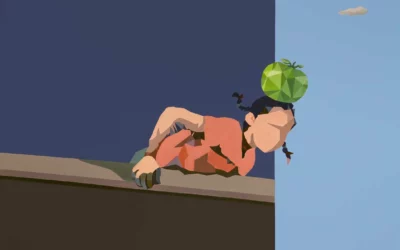My Impression of the Artwork by Rona Hu -- Luo Li
Rona Hu is among the recent crop of female artists who have gained both prominence and significant promise in the artistic world. Over the years, she has faithfully followed her own artistic instincts to paint with calmness and simplicity. She carefully observes and captures the essence of emotions hidden within the passage of time. When looking upon the recent collections of paintings by the artist, it is hard not to notice a series of coherent themes upon which the artist has prominently demonstrated her vigorous and exuberant creativity. She portrays her topic with meticulous care and with bold and bright colors, avoiding the usual trappings of over-complication and extravagance. Her use of fading color simultaneously reinforces the timeliness of both the past and the present, a point also captured most adequately in her economical use of canvas space to define historical moments in time. In the artist’s eyes, a point in time is expressed as a point in the space; shifting between these points epitomizes the exchanges between the new and the old, the past and the present, and normalcy and chaos.
In both the “One World, One Dream” and “Terra Cotta Warriors Aria!” series, the artist blends oriental elements and western concepts, moulding two ideas seamlessly into one scene amid a background of lively and pleasant colors. Disguised behind a seemingly simple, orderly, and somewhat sarcastic tone, the artist tries to paint a rational and simple “world”. Upon closer inspection of the artist’s paintings, it becomes apparent that the artwork is pervaded by a unique tenaciousness, a trait that helps forge the artist’s idealism path. At the same time, it would appear that the artwork by the artist has little in common with the many Chinese contemporary arts that have recently been in vogue. However, the artist is making a point of not succumbing to the limitations of any particular popular school of art, and adamantly refuses to become a “mega buck” painting copycat. From the point of view of this unsettling and chaotic world, one could argue that it would take a more thoughtful mind to understand the simplicity expressed in the artist’s paintings than the abstractionism in the abstractionist paintings.
“We” the Past and “They” the Contemporary is a unique series in that the audience can clearly detect the evolution of the artist from succinctness and a fineness often associated with female artists to a more comprehensive maturity. A much stronger tone and temperament emerges from her seemingly random and abstract brushes, and continues to progress alongside her numerous memories and nostalgias. Ultimately, behind the veil of seemingly “nihilistic” pattern of colors, the artist resists the temptation of overzealousness and anxiousness, and instead follows her own path and pace to finish the construction of her aesthetic fine prints and symbolism system.
To an artist, the sense of time and space is usually the bridge to the unknown world. It often enlightens the artists, helping them awaken some deep feeling often unexplainable by our limited human vocabulary, and to comprehend the form and meaning of life. Needless to say, only those artists who successfully overcome the inertia of conventional thinking can reach this destination. Time and space remains the virgin land yet to be fully exploited from the point of view of artistic expression. Even though we know precious little about time and space, we have long accepted its paramount place in humanity’s basic instinct.
The artist is telling us her stories through her work, but there is more than just simple, pragmatic storytelling here. The audience in particular has no need to stress itself out in attempting to extract deep political and social symbols from the artwork. They are all simply part of pure artistic construction. In the 19th century, artists employed pure aesthetic fine points in the form of lights and colors to lay the principle of randomness and simpleness down to the fine arts. This has become the acquired taste of contemporary artists and the guiding light for today’s artistic world.
(Dr. Luo Li, Associate Research Fellow of China Fine Art Research Institute)




